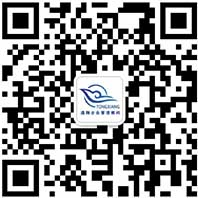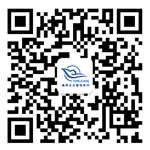熱門關(guān)鍵詞:bscisedexISO9001FSC認(rèn)證反恐驗廠
- 雀巢(Nestle)驗廠
- 克羅格(Kroger)驗廠
- Tchibo(智寶)驗廠
- 優(yōu)衣庫驗廠
- CVS西維斯驗廠
- BOSCH博世驗廠
- Apple蘋果驗廠
- Disney迪士尼驗廠
- 沃爾瑪(Wal-Mart)驗廠
- WCA驗廠
- 好市多(COSTCO)驗廠
- 杰西潘尼(JCPenney)驗廠
- 孩之寶(hasbro)驗廠
- 塔吉特(Target)驗廠
- 亞馬遜(Amazon)驗廠
- 麥當(dāng)勞(McDonald)驗廠
- 雅芳(AVON)驗廠
- 宜家(IKEA)驗廠
- 星巴克(Starbucks)驗廠
- 可口可樂(COCA COLA)驗廠
- 家樂福(Carrefour)驗廠
- FCCA驗廠
- SQP驗廠
- 百思買(BestBuy)驗廠
- 樂購(tesco)驗廠
- 凱馬特(Kmart)驗廠
- 利豐(Li&Fung)驗廠
- 阿迪達(dá)斯(Adidas)驗廠
- 彪馬(PUMA)驗廠
- Argos驗廠
- 迪卡儂(Decathlon)驗廠
- 史泰博(Staples)驗廠
- 美泰(Mattel)驗廠
- 梅西(Macy's)驗廠
- 耐克(NIKE)驗廠
- 西爾斯(Sears)驗廠
- 家得寶(Home Depot)驗廠
- 瑪莎(Marks Spencer)驗廠
- Nordstrom驗廠
- Guess驗廠
- ICS驗廠
- 薩克斯(Saks)驗廠
- Kohl's科爾士驗廠
- Dollar General(DG)驗廠
- 保羅(POLO)驗廠
- TJX驗廠
- VF驗廠
- 李維斯(Levis)驗廠
- H&M驗廠
- 奇堡(TCHIBO)驗廠
- Primark驗廠
- Mervyns驗廠
- Zara颯拉驗廠
- Inditex驗廠
- Kiabi驗廠
- Contempo驗廠
- J.Crew驗廠
- 比亞迪驗廠
- 抖音驗廠
- 丹佛斯(Danfoss)驗廠
- 肯德基(KFC)驗廠
- 環(huán)球影視公司(NBCU)驗廠
- 茵寶(Umbro)驗廠
- EcoVadis認(rèn)證審核
- 沃爾格林(Walgreen)驗廠
- 沃爾沃斯(Woolworths)驗廠
- ALDO/AGS驗廠
- AG驗廠
- 名創(chuàng)優(yōu)品(MINISO)驗廠
- GMP驗廠
- Michaels驗廠
- 銳步(Reebok)驗廠
- PVH驗廠
- 摩托羅拉(Motorola)驗廠
- 阿爾迪(ALDI)驗廠
- Hema驗廠
- HBI驗廠
- HBC驗廠
- 萬代(Bandai)驗廠
- 百安居(B&Q)驗廠
- 歐萊雅(LOREAL)驗廠
- 飛利浦(Philips)驗廠
- 勞氏(Lowe's)驗廠
- Lidl驗廠
- 翠豐(Kingfisher)驗廠
- GAP驗廠
- ITS驗廠
- 其他工廠驗廠
13798281568

TJX驗廠審核準(zhǔn)備過程和現(xiàn)場審核程序
TJX驗廠審核準(zhǔn)備過程和現(xiàn)場審核程序
VENDOR REQUIREMENTS
Cooperation from our suppliers is critical to making this program a success. We value your
participation in this program. It is our aim to provide you with the appropriate information to
assist you in preparing for an audit.
Step One: Identification of Active Factories
TJX requires the Vendor to notify our Agent of all active TJX production factories, on a monthly
basis. Active factories are defined as factories with current production, future on order, or
production within the past 12 months.
Step Two: Communication to Active Factories
The Vendor is responsible for informing the active factories that a social compliance audit will
take place and for ensuring that the ‘Audit Procedure Outline’ and ‘Factory Evaluation
Checklist’ are provided to the factory, as it offers assistance to prepare for the audit. Conducting
a mock audit of the factory using the checklist provided in this manual is highly recommended.
Step Three: Making an Appointment
The auditor will contact the factory directly to make a 2-week window announcement for the
audit. The Vendor and Agent will also be informed of the audit timeframe. Please ensure at least
one member of the factory’s management team, who has access to the appropriate documents
required to complete the audit, is present in the audit timeframe.
Step Four: Prepare for an Audit
Please ensure that the following list of documents is made available to the auditors to avoid
further re-audit. Please provide any other additional documentation upon the auditors’ request.
Employee Documentation
o Employment contracts/ terms & conditions of employment
o Employee files (including employment application, discipline letters, labor contract, etc.)
o Proof of age documentation (copies of identification cards, birth certificates, medical
clearance, etc.)
o Restrictions on workers below the age of unrestricted employment
Facility Policies and Procedures
o Internal operating policies and procedures (Company Policy)
o Business licenses, maintenance and health licenses
o Wage and hour policies (Minimum wage, overtime, maximum daily/ weekly hours)
o Annual leave and required holidays
o Nondiscrimination/ Harassment
o Other benefits and allowances
o Any other government licenses, certificates of operation, etc.
Payroll Documents (for the current 6 months)
o Payroll records
o Time records
o Piece rate records
o Payroll registers
o Payroll stubs
o Special labor waivers such as the overtime extension waiver
General Environmental Health & Safety
o Plant layout or facility plot plan
Confidential 9
o Environmental Health & Safety manual and/or written programs
o Assessment records (machinery, fire extinguisher, eyewash/shower, etc.)
o Dormitories (government licenses, assessment reports)
Environmental (only if working with chemicals)
o Hazardous waste manifests or shipping papers
o Waste profiles/test results/waste analyses
Health & Safety
o Accident or injury reports
o Chemical inventory
o Material safety data sheets (MSDS’s)
o List of required/approved personal protective equipment
o Emergency response plan
o Testing, inspection, and maintenance records for fixed and portable fire equipment
o Evacuation/emergency maps
Step Five: Wait for Audit Results
Typically, the turnaround time for the auditor to complete the audit and finalize the full report is
10 business days. During this time, the report goes through a number of checks to ensure that the
audit findings are accurate, the assessment is fair and reflects TJX’s criteria, and any grammatical
errors are corrected.
In special cases, where production needs to start as soon as possible, the auditor should be
notified of this in Step One. The auditor will try their best to schedule the audit with respect to
your timeline, however they cannot guarantee that this is possible every time.
Step Six: Re-audit (If required)
The re-audit evaluation has been designed for verification of compliance and ensures that
recommended corrective actions have been taking place since the last audit. Any re-audit
requirement is determined by TJX based on the status of the factory and/or previous audit
findings.
In the event that a re-audit is required, an invoice will be issued to the supplier directly by TJX’s
third-party auditor. A re-audit will not take place until the invoice is paid. Failure to pay this
invoice is synonymous with non-participation in the program, and TJX reserves the right to
suspend or terminate business until such time that the invoice is paid and an audit can occur.
Confidential 10
AUDIT PROCEDURE OUTLINE
The audit is a fact-finding process, designed to help you identify areas within the factory’s
operations that require improvement to ensure you are in compliance with TJX standards and
country-specific legal requirements related to the factory’s production. No certificate is provided
at the completion of the audit, and it does not automatically approve you for production for any
other brands or retailers, or qualify you for membership in industry associations.
An audit consists of five components (not necessarily completed in this order): an opening
meeting, health and safety tour, payroll and documentation inspection, employee interviews, and
a closing meeting. In addition, if further steps or documents are needed in order to have a
complete understanding of the factory situation, they can be requested and should be provided.
Management such as the factory manager or human resource personnel should be present.
Otherwise, assistance may be provided by anyone whom the factory deems has the authority to
provide the documents needed and to answer the questions from the auditors.
Opening Meeting
After the auditors have passed all security requirements and are given access to the factory, an
opening meeting is held with the contact person, preferably management. During this meeting,
the format of the audit is described. The production manager and the human resource personnel
are needed in order to answer a series of questions regarding production capacity, machines, lead
times, and hiring practices.
Health and Safety Tour
A walkthrough of the factory is conducted to ensure adequate measures are in place to protect the
health of workers and guarantee their safety and the safety of the surrounding environment.
Production capacity is also evaluated during the walkthrough. Housing units, if applicable, need
to be inspected by the auditors. The eating area used by the workers is also viewed, as is the
kitchen if cooking takes place onsite.
Security of the facility will be evaluated, with attention to physical security features as well as
factory policies concerning security.
Photographs of the factory are also taken with permission from management.
Payroll and Documentation Inspection
Payroll documentation is reviewed. Payroll journals, timecards, production records, attendance
books, proof of insurance payment or tax payment (if applicable) must all be provided to the
auditors for a complete audit to take place. The auditors are checking to ensure that the regional
minimum wage is provided to all employees for all hours worked, including overtime
compensation. Also evaluated is whether maximum hours authorized to work, including
weekend and evening hours, are in compliance with regional labor laws.
Copies of operating licenses and other government issued permits are also reviewed. Customs
documents will also be requested. If quota restrictions apply, quota information should be
provided along with shipping invoices and country of origin documentation.
Company policies handbooks and management systems are reviewed. Employee records are
reviewed. Proof of age documentation must be available.
Confidential 11
Employee Interviews
The auditors will randomly select employees from various production areas for interviews, away
from the presence of management or other employees. Auditors will require the use of a private
room in which to conduct these interviews. Employees are asked questions regarding hours of
work, length of employment, their understanding of human rights (freedom of association,
collective bargaining, equal opportunity, non-discrimination, unrestricted liberties, etc.),
disciplinary policies of the factory, hiring policies, and working conditions.
Closing Meeting
At the conclusion of the audit a Corrective Action Plan (CAP) is created if necessary and all
concerns are discussed with the facility management. Management is encouraged to write
comments in the second part of the CAP as to reflect any disagreements or clarifications.
Management is requested to sign the CAP, to verify that they understand the findings. A copy of
the CAP is left with management to assist them in resolving the concerns detected during the
audit.
Post-Audit Activities:
Within 15-20 days from this audit, a formal, typed copy of this audit report will be sent to
the Agent. A copy will be automatically sent to TJX.












